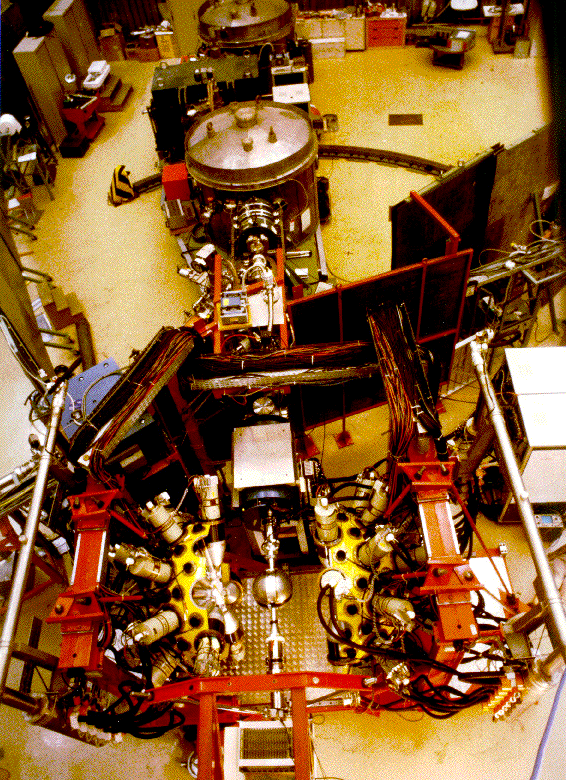The RMS C.A.ME.L.
 In order to increase
the detection sensitivity, GASP can also be operated in connection with the Recoil
Mass Separator (CAMEL) placed downstream in the target hall.
In order to increase
the detection sensitivity, GASP can also be operated in connection with the Recoil
Mass Separator (CAMEL) placed downstream in the target hall.
To preserve high flexibility
and autonomy in the separate use of both instruments a rough reduction factor of
two, in the overall ion transmission from the GASP center to the CAMEL focal plane,
has been accepted if compared with the use of CAMEL as a single instrument.
A MW-PPAC Focal plane detector
covers about 12 cm (X axis) horizontally and 8 cm vertically (Y axis) and delivers
X, Y and the time of flight information elapsed from the GASP trigger to the PPAC
signal.
When used in the coupled
version the GASP-RMS system has a mass resolution better than 1/300 and a
transmission efficiency which ranges from few percent up to = 20% in the best
cases so far observed.
Even if the target thickness
is important when the mass resolution is a demanding condition (in these cases it
must be less than 0.5 = mg/cm2), a relatively thick target ( 1 = mg/cm2)
can be used with some small deterioration of the RMS performances.
Due to the strong kinematic
dependence of the RMS efficiency, a gate in the ion mass is convenient only if the
experimental RMS efficiency is higher than the GASP efficiency for the higher fold
or in very specific cases when two nuclei with different masses have gamma-ray transitions
with the same energy.
